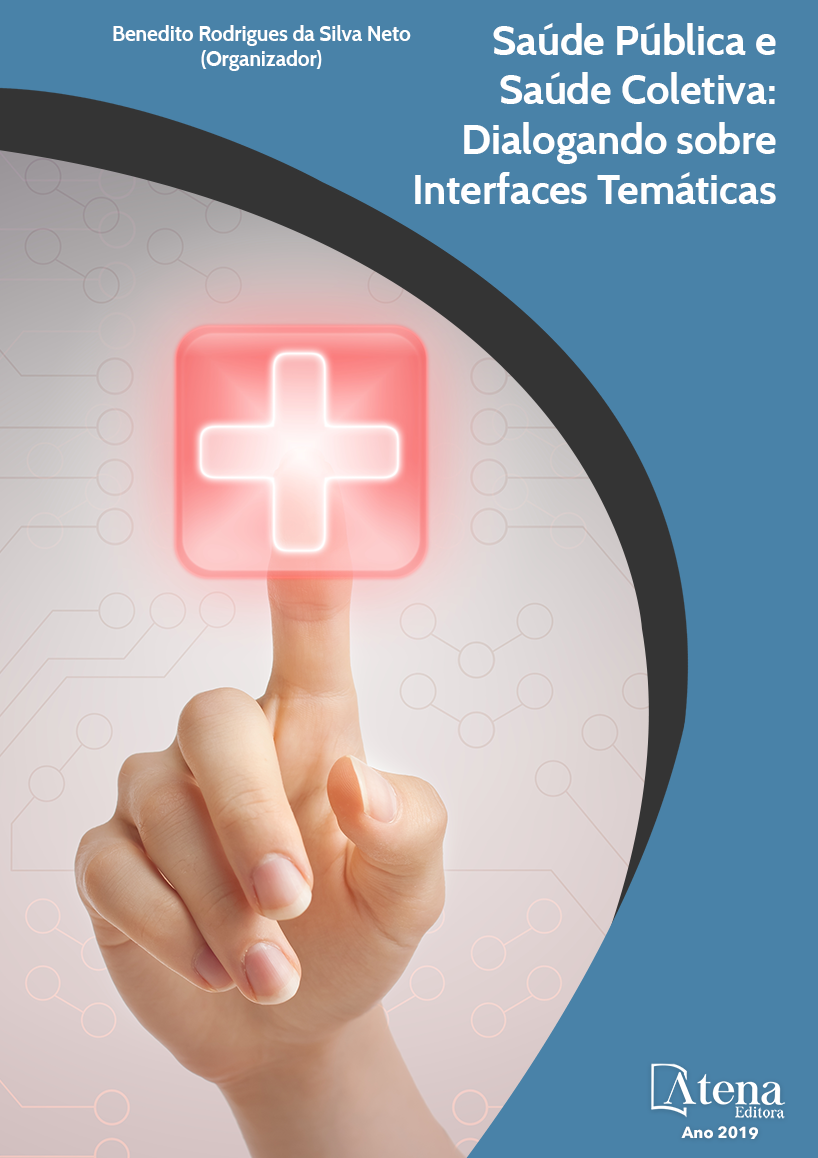
ANÁLISE DAS PRESCRIÇÕES DE ANTIMICROBIANOS NAS UNIDADES DE TERAPIA INTENSIVA NEONATAL E PEDIÁTRICA EM UM HOSPITAL DE ENSINO DA REGIÃO NORTE DO ESTADO DO CEARÁ
Os antimicrobianos são grupos de
medicamentos utilizados para o combate de
doenças infecciosas, cuja utilização adequada
têm sido uma das principais preocupações
mundiais. Isso porque, o uso excessivo
desses agentes em hospitais contribui para o
desenvolvimento de resistência bacteriana,
elevando os custos hospitalares e riscos de
reações adversas a medicamentos. Para
minimizar esta resistência é necessário
preconizar o Uso Racional de Medicamento
(URM). O presente estudo teve como
finalidade analisar o perfil das prescrições
dos antimicrobianos em um hospital da região
Norte do estado do Ceará. Para elaboração
deste trabalho foi realizada uma pesquisa de
campo, descritiva, transversal, documental
de abordagem quantitativa, baseado em
prontuários e nas prescrições médicas
contendo antimicrobianos resgatados do
Serviço de Arquivo Médico e Estatístico
(SAME), no período de agosto a outubro de
2014, onde foram analisadas 1.305 prescrições,
observando os seguintes aspectos: gênero
e idade do paciente, classe medicamentosa
prescrita, infecção mais recorrente, presença
de itens obrigatórios na prescrição, legibilidade,
tipologia do medicamento e principais vias de
administração. O gênero que mais fez uso
desse tipo de fármaco foi o masculino (64%).
A patologia mais recorrente nos pacientes
internados foi a sepse não especificada (54%).
O microrganismo que esteve mais presentes
nos exames diretos ou culturas foi a Klebsiella
pneumoniae (17,5%). Os medicamentos
mais prescritos foram à penicilina cristalina
associada com gentamicina (40%), meropenem
(18%) e vancomicina (15%). Os medicamentos
genéricos foram os mais prescritos (99%). A via de administração mais utilizada foi
à endovenosa (97%). Em relação aos dados dos pacientes e dos prescritores foram
os mais ausentes: leito (46%); número do prontuário (26%); enfermaria (23%);
assinatura do prescritor (26%) e o carimbo (16%). Os dados do medicamento foram
mais ausentes à forma farmacêutica (53%) e a concentração (22%). Em relação à
legibilidade das prescrições, mostraram-se legíveis 97%. Diante do grande consumo
de antimicrobianos no hospital de estudo, há necessidade de uma orientação contínua
das estratégias adotadas para o controle desses medicamentos.
ANÁLISE DAS PRESCRIÇÕES DE ANTIMICROBIANOS NAS UNIDADES DE TERAPIA INTENSIVA NEONATAL E PEDIÁTRICA EM UM HOSPITAL DE ENSINO DA REGIÃO NORTE DO ESTADO DO CEARÁ
-
DOI: 10.22533/at.ed.8601902095
-
Palavras-chave: Infecção hospitalar. Unidade de Terapia Intensiva. Resistência bacteriana. Uso racional de medicamentos.
-
Keywords: Hospital infection. Intensive care unit. Bacterial resistance. Rational use of medicines.medicines.
-
Abstract:
Antimicrobials are groups of drugs used to fight infectious diseases,
whose proper use has been a major concern worldwide. This is because, excessive
use of these agents in hospitals contributes to the development of bacterial resistance,
raising hospital costs and risks of adverse drug reactions. To minimize this resistance it
is necessary to recommend the Rational Use of Medication (URM). The present study
aimed to analyze the profile of antimicrobial prescriptions in a hospital in the northern
region of the state of Ceará. A field, descriptive, cross - sectional, documentary,
quantitative approach based on medical records and medical prescriptions containing
antimicrobials rescued from the Medical and Statistical Archive Service (SAME) was
carried out in the period from August to October 2014, where 1,305 prescriptions were
analyzed, observing the following aspects: gender and age of the patient, prescribed
drug class, more recurrent infection, presence of mandatory items in the prescription,
legibility, typology of the drug and main routes of administration. The gender that most
used this type of drug was male (64%). The most frequent pathology in hospitalized
patients was unspecified sepsis (54%). The microorganism that was most present in
direct examinations or cultures was Klebsiella pneumoniae (17.5%). The most prescribed
drugs were crystalline penicillin associated with gentamicin (40%), meropenem
(18%) and vancomycin (15%). Generic drugs were the most prescribed (99%). The
most commonly used route of administration was endovenous (97%). Patient and
prescriber data were the most absent: bed (46%); number of records (26%); infirmary
(23%); signature of the prescriber (26%) and the stamp (16%). Drug data were most
absent from the pharmaceutical form (53%) and concentration (22%). Regarding the
readability of the prescriptions, they were readable 97%. Given the high consumption
of antimicrobials in the study hospital, there is a need for a continuous orientation of the
strategies adopted to control these drugs.
-
Número de páginas: 15
- ANTONIO JANDESON FERREIRA FROTA
- MARIA VITÓRIA LAURINDO
- DERIVÂNIA VIEIRA CASTELO BRANCO
- FRANCISCA AILA DE FARIAS
- CARLA TAMIRES FARIAS DE ABREU
- JOSÉ CLÁUDIO DIAS AGUIAR
- RENAN RHONALTY ROCHA


